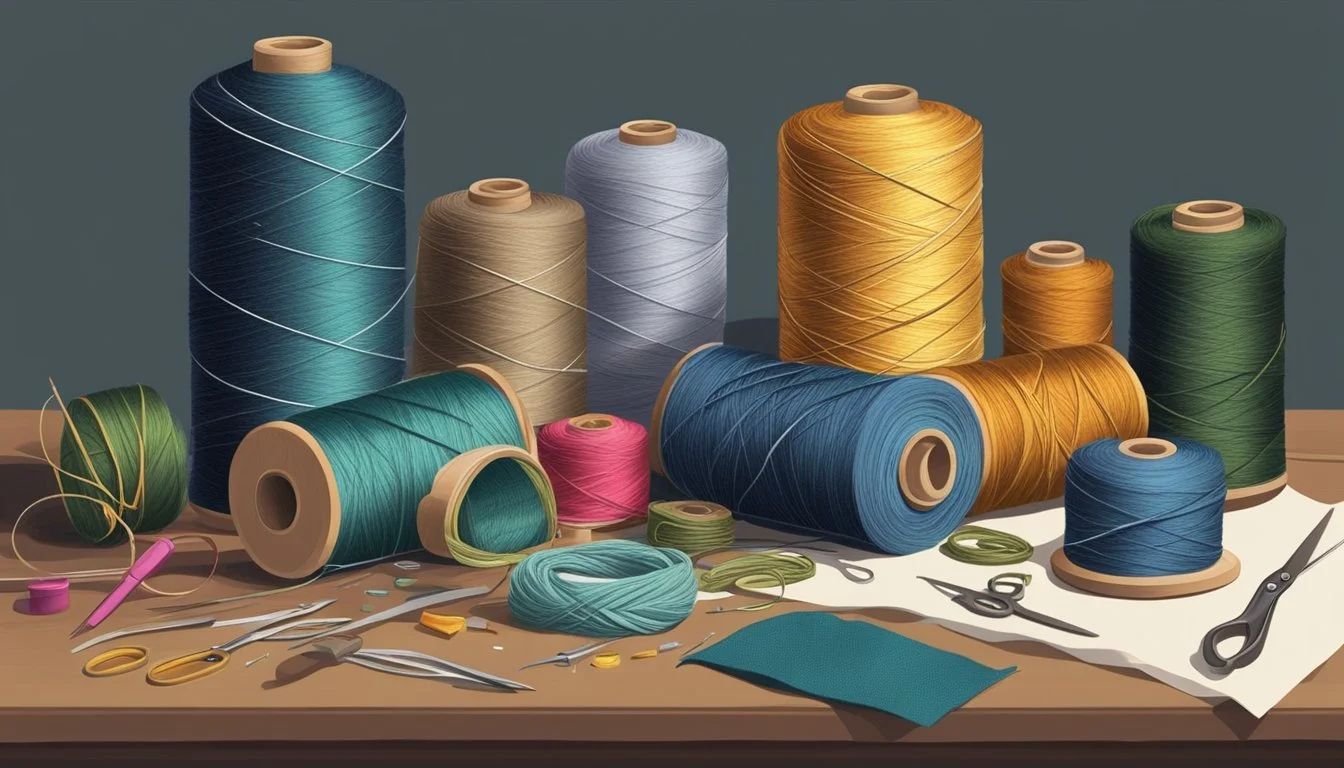Threads: The Nuclear Nightmare That Still Haunts Britain 40 Years Later
Threads, a 1984 British television film, stands as one of the most chilling depictions of nuclear war ever produced. Directed by Mick Jackson for the BBC, this apocalyptic drama unfolds in Sheffield, England, portraying the devastating effects of a nuclear attack on a working-class city. The film's realistic approach and unflinching portrayal of the aftermath of nuclear conflict left an indelible mark on viewers, earning it a reputation as one of the most terrifying programs ever broadcast on British television.
Even 40 years after its initial release, Threads continues to haunt audiences with its stark imagery and uncompromising narrative. The documentary-style production follows two families as they navigate the immediate and long-term consequences of nuclear war, offering a grim look at the collapse of civilization. Its impact extends beyond entertainment, serving as a powerful anti-war statement and a sobering reminder of the potential horrors of nuclear conflict.
The enduring legacy of Threads is evident in its continued relevance and the discussions it sparks about nuclear proliferation and its consequences. Recent commemorative screenings and a new BBC Radio 4 documentary exploring the film's impact underscore its lasting significance in popular culture and public discourse on nuclear war.
Historical Context
The "Threads" documentary emerged during a period of heightened global tensions and nuclear anxiety. The early 1980s saw escalating Cold War rhetoric and an accelerated arms race between superpowers.
Cold War Tensions
The Cold War reached a critical phase in the early 1980s. U.S. President Ronald Reagan adopted a more confrontational stance towards the Soviet Union. He referred to the USSR as an "evil empire" and increased military spending. The Soviet leadership viewed these actions with alarm. Proxy conflicts intensified in regions like Afghanistan, Central America, and Africa. Both sides engaged in large-scale military exercises that raised fears of accidental war.
Nuclear Arms Race
Nuclear arsenals grew rapidly during this period. The U.S. and Soviet Union developed more powerful and accurate missiles. New weapons like the American Pershing II and Soviet SS-20 missiles shortened potential warning times. The concept of "mutually assured destruction" underpinned strategic thinking. Public fears of nuclear war spiked. Anti-nuclear movements gained strength in Europe and North America.
Soviet Union and NATO Relations
NATO-Warsaw Pact relations deteriorated sharply. The deployment of U.S. Pershing II and cruise missiles in Western Europe provoked strong Soviet opposition. NATO conducted its Able Archer 83 exercise, which some in the USSR mistook for preparations for a real attack. Soviet leader Yuri Andropov feared a U.S. first strike. Tensions eased somewhat after 1985 with the rise of Mikhail Gorbachev, but remained high. The unstable climate formed the backdrop for "Threads" and similar nuclear war-themed media.
Film Synopsis
Threads portrays a harrowing vision of nuclear war's impact on Sheffield, England and its aftermath. The film follows ordinary citizens as they face unimaginable devastation and struggle to survive in a post-apocalyptic world.
Plot Overview
The story centers on Sheffield in the early 1980s amid rising international tensions. As nuclear conflict looms, the film depicts the city's preparations and the lives of its residents. The narrative focuses on two families connected by a young couple, Ruth Beckett and Jimmy Kemp.
When nuclear bombs strike, Sheffield is obliterated. The film graphically shows the immediate effects: mass casualties, destroyed infrastructure, and societal collapse. It then tracks the long-term consequences over more than a decade.
Survivors face radiation sickness, food shortages, and a breakdown of law and order. The remnants of civilization regress into a primitive, agrarian society. Children born after the attack suffer from physical and cognitive impairments.
Key Characters
Ruth Beckett: A young woman who discovers she's pregnant just before the nuclear attack. She survives and gives birth in the post-apocalyptic world.
Jimmy Kemp: Ruth's boyfriend, separated from her during the chaos of the attack.
Mr. and Mrs. Beckett: Ruth's parents, representing the older generation facing the crisis.
Mr. and Mrs. Kemp: Jimmy's parents, offering a contrasting perspective on the unfolding events.
Bob: The emergency coordinator for Sheffield, providing insight into official responses to the crisis.
Dramatic Narrative
Threads employs a documentary-style approach, blending fictional scenes with factual information. This technique enhances the film's realism and emotional impact.
The narrative unfolds chronologically, charting the escalation of tensions, the nuclear attack, and its aftermath. It doesn't shy away from graphic depictions of injuries, deaths, and societal breakdown.
The film's power lies in its focus on ordinary people. By following Ruth, Jimmy, and their families, it personalizes the abstract concept of nuclear war. This approach makes the horror more relatable and immediate.
Threads also explores the long-term effects of nuclear war. It shows the collapse of infrastructure, the loss of knowledge and technology, and the struggle to rebuild any semblance of society.
Production and Release
Threads, the groundbreaking 1984 British television film, was a collaborative effort between the BBC, Nine Network, and Western-World Television Inc. The production process involved meticulous research, innovative filmmaking techniques, and a carefully orchestrated release strategy.
Development
Barry Hines wrote the screenplay for Threads, drawing on extensive research into the potential effects of nuclear war. The project was initiated following Mick Jackson's 1982 documentary on nuclear conflict. Jackson, who directed and produced Threads, aimed to create a realistic portrayal of nuclear devastation.
The BBC greenlit the project in 1983, recognizing its importance in raising public awareness about nuclear threats. The filmmakers consulted scientific experts to ensure accuracy in depicting the aftermath of a nuclear strike.
Filmmaking
Threads was shot in just 17 days in early 1984, with a modest budget of £250,000. The production team utilized Sheffield as the primary filming location, capitalizing on its industrial landscape.
Local residents, many of whom were Campaign for Nuclear Disarmament supporters, served as extras. This choice added authenticity to crowd scenes and reflected the film's anti-nuclear stance.
Jackson employed documentary-style techniques to enhance realism. The use of handheld cameras and natural lighting contributed to the film's gritty, immediate feel.
Broadcast and Reception
Threads premiered on BBC Two on September 23, 1984. The broadcast was part of a larger programming block focused on nuclear issues.
The film was paired with the documentary "On the Eighth Day" and followed by a Newsnight panel discussion. This comprehensive approach aimed to stimulate public debate on nuclear warfare.
Threads garnered critical acclaim and left a lasting impact on viewers. Its unflinching depiction of nuclear devastation shocked audiences and sparked intense discussions about the dangers of nuclear proliferation.
The film's influence extended beyond the UK, with subsequent broadcasts in other countries. Its powerful message and technical achievements earned Threads several awards and cemented its place in television history.
Themes and Analysis
Threads explores the devastating consequences of nuclear war through a stark, realistic lens. It delves into societal collapse, human survival instincts, and the futility of civil defense preparations.
Representation of Nuclear War
Threads presents an unflinching portrayal of nuclear conflict and its aftermath. The film depicts the immediate destruction of Sheffield and the subsequent societal breakdown with chilling realism. Scenes of radiation sickness, food shortages, and infrastructure collapse illustrate the long-term effects of nuclear winter.
The documentary style adds credibility, blending fictional characters with factual information about nuclear war's impact. This approach heightens the sense of authenticity and urgency.
Threads emphasizes the inadequacy of civil defense measures, showing how quickly order disintegrates in the face of widespread destruction. The film's grim depiction of survival in a post-nuclear landscape serves as a powerful anti-war statement.
Social and Political Commentary
Threads offers sharp commentary on Cold War politics and social structures. The film focuses on working-class characters, highlighting how global conflicts affect ordinary people.
It critiques the government's lack of preparedness and the futility of nuclear deterrence strategies. The rapid breakdown of social norms and institutions underscores the fragility of civilized society.
The film also explores gender roles in crisis, showing how traditional expectations shift in the face of extreme circumstances. This nuanced approach adds depth to the social commentary.
Comparison with Related Works
Threads stands out among nuclear war-themed productions for its uncompromising realism. Unlike "The Day After," which aired in the US, Threads presents a bleaker, more pessimistic view of post-nuclear survival.
The film shares themes with Raymond Briggs' graphic novel "When the Wind Blows," both focusing on ordinary people facing nuclear devastation. However, Threads takes a broader societal view.
"The War Game," an earlier BBC production, influenced Threads' documentary-style approach. Both films aim to educate viewers about nuclear war's consequences, but Threads offers a more comprehensive and graphic depiction.
Impact and Legacy
Threads left an indelible mark on viewers and popular culture, shaping perceptions of nuclear war for decades. Its unflinching portrayal resonated deeply, influencing media depictions and public discourse on atomic threats.
Public Reaction
Threads shocked audiences with its graphic depiction of nuclear devastation. Many viewers reported sleepless nights and lingering anxiety after watching. The film's realism sparked intense public debate about nuclear deterrence policies.
In Britain, it bolstered support for the Campaign for Nuclear Disarmament. Some schools and community groups organized screenings to raise awareness. Critics praised its educational value, while others worried it could traumatize viewers.
The BBC received thousands of calls and letters in response. Many expressed gratitude for the sobering wake-up call about nuclear risks. Others criticized it as alarmist or too disturbing for television.
Cultural Significance
Threads became a cultural touchstone, referenced in music, literature, and political discourse. It shaped a generation's fears about nuclear war and post-apocalyptic survival.
The film influenced apocalyptic fiction, setting a new standard for realism. Its bleak portrayal of societal collapse informed later works like Cormac McCarthy's The Road.
Threads entered the lexicon as shorthand for nuclear horror. Phrases like "Threads scenario" became common in discussions of atomic threats. The film's imagery of devastated cityscapes became iconic.
It remains relevant decades later, with periodic revivals and retrospectives. Streaming platform Shudder added Threads to its library in 2018, exposing new audiences to its chilling vision.
Influence on Media
Threads raised the bar for realism in depictions of nuclear war. It inspired filmmakers and TV producers to create more scientifically accurate portrayals of atomic devastation.
The film influenced later productions like The Day After and When the Wind Blows. Its documentary-style approach was emulated in works seeking to convey nuclear realities.
Threads impacted news coverage of nuclear issues. Programs like BBC's Newsnight referenced it when discussing atomic threats. Journalists cited the film to illustrate potential war scenarios.
Media figures like Charlie Brooker have praised Threads' lasting power. Brooker called it "the most terrifying and honest depiction of nuclear war ever filmed." Its stark realism continues to set the standard for portrayals of civilization's collapse.
Scientific Perspective
"Threads" incorporated rigorous scientific research to portray the devastating effects of nuclear war. The film's approach combined factual accuracy with stark realism to educate viewers on the multi-faceted consequences of atomic weapons.
Effects of Nuclear War
Nuclear explosions cause immediate destruction through blast waves, extreme heat, and intense radiation. The film depicts widespread infrastructure damage, massive casualties, and societal collapse. Electromagnetic pulse (EMP) effects disable electronic devices and communications networks. Fires ignited by thermal radiation create firestorms that consume oxygen and produce toxic smoke plumes.
Long-term impacts include disrupted food and water supplies, breakdown of medical services, and economic devastation. The film illustrates how these cascading effects lead to famine, disease outbreaks, and social unrest in the aftermath.
Radiation Sickness and Medical Response
Acute radiation syndrome manifests through symptoms like nausea, vomiting, and hair loss. "Threads" shows victims suffering from radiation burns, internal bleeding, and compromised immune systems. Limited medical resources mean many go untreated.
Chronic radiation exposure increases cancer rates and causes genetic damage. The film portrays birth defects and developmental issues in children born after the attack. Overwhelmed hospitals struggle to provide even basic care as supplies dwindle and trained staff become scarce.
Nuclear Fallout and Environmental Consequences
Radioactive particles spread through wind and water, contaminating vast areas. "Threads" depicts how fallout settles on crops, enters the food chain, and renders regions uninhabitable. Protective measures like decontamination and sheltering are shown to be inadequate for the scale of contamination.
Nuclear winter effects emerge as smoke and dust block sunlight, leading to global cooling. The film illustrates crop failures, ecosystem collapse, and mass extinctions resulting from these climate disruptions. Long-lasting environmental damage impedes recovery efforts for generations.
Societal Implications
"Threads" exposed the stark realities of nuclear war's impact on society. The film's unflinching portrayal prompted widespread reflection on survival strategies, psychological resilience, and human behavior in extreme circumstances.
Civil Defence Strategies
Civil defence plans proved woefully inadequate in the face of nuclear devastation depicted in "Threads". Local authorities struggled to maintain order as infrastructure crumbled. Emergency services were quickly overwhelmed, leaving citizens to fend for themselves.
The film highlighted the futility of typical Cold War-era preparations. Fallout shelters and evacuation procedures offered little protection against the widespread destruction. Food and medical supplies rapidly depleted, exacerbating the crisis.
"Threads" exposed gaps in government planning for long-term survival scenarios. It questioned the effectiveness of civil defence measures in the aftermath of a nuclear exchange.
Psychological Impact on Population
The psychological toll of nuclear war emerged as a central theme in "Threads". Characters grappled with severe trauma, grief, and the collapse of social norms. Widespread panic and despair set in as the reality of their situation became clear.
Survivors faced long-term mental health challenges. Post-traumatic stress, depression, and anxiety became rampant. The loss of loved ones, coupled with the destruction of familiar surroundings, left deep psychological scars.
The film depicted the breakdown of social cohesion under extreme stress. Trust eroded as people fought for limited resources. The struggle to maintain humanity in the face of unimaginable horror became a key focus.
Survivalism and Human Behavior
"Threads" explored how survival instincts shape human behavior in a post-apocalyptic world. Characters were forced to make difficult moral choices to stay alive. The breakdown of law and order led to the emergence of primitive social structures.
The film showed the stark contrast between pre-war society and the brutal reality of survival. Basic necessities like food, water, and shelter became precious commodities. Bartering and scavenging replaced traditional economic systems.
"Threads" highlighted the resilience of the human spirit in dire circumstances. Some characters maintained their compassion and humanity, while others succumbed to desperation and violence. The struggle to rebuild some semblance of civilization became a central theme in the aftermath of nuclear devastation.
Comparative Discussion
Threads and The Day After offer distinct portrayals of nuclear war's impacts. These films differ in their approaches to depicting nuclear conflict, reflecting unique British and American perspectives. They also employ contrasting storytelling techniques to convey their messages.
Threads vs. The Day After
Threads presents a bleaker, more realistic depiction of nuclear war than The Day After. The British film focuses on long-term consequences, showing societal collapse and multi-generational effects. It emphasizes the breakdown of infrastructure and human relationships.
The Day After, while still impactful, takes a more sanitized approach. It concentrates on the immediate aftermath and maintains a sense of hope. The American film portrays characters rebuilding their lives amid the devastation.
Both films sparked public discourse on nuclear proliferation. Threads left a lasting impression due to its unflinching portrayal of nuclear winter. The Day After reached a wider audience through its primetime broadcast on ABC.
British vs. American Portrayals of Nuclear Conflict
British and American depictions of nuclear war reflect distinct cultural perspectives. Threads adopts a pessimistic view, emphasizing the futility of survival in a post-nuclear world. It critiques government preparedness and highlights societal vulnerabilities.
The Day After maintains a more optimistic outlook, focusing on individual resilience and community strength. It aligns with American values of perseverance and rebuilding.
British portrayals tend to be more graphic and uncompromising. American depictions often balance horror with elements of hope and recovery. These differences stem from varying national experiences and attitudes toward nuclear threats during the Cold War.
Drama-Documentary vs. Traditional Horror Film
Threads employs a drama-documentary style, blending fictional characters with factual information. This approach lends authenticity and educational value to the narrative. It uses documentary techniques like voiceovers and statistics to reinforce its message.
The Day After follows a more traditional dramatic structure. It focuses on character development and emotional arcs within the disaster scenario. This approach aims to create a stronger emotional connection with viewers.
Drama-documentaries like Threads often prioritize realism over entertainment. They aim to inform and provoke thought. Traditional dramatic approaches, as seen in The Day After, balance factual elements with narrative engagement. Both styles can effectively convey the horrors of nuclear war, but they appeal to different viewer preferences and expectations.






